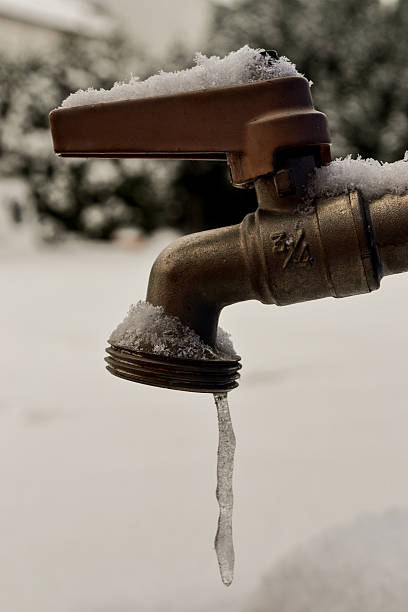Ways to Defend Your Pipes from Freezing: Professional Tips
Ways to Defend Your Pipes from Freezing: Professional Tips
Blog Article
Were you interested in guidance about How to prepare your home plumbing for winter weather?

Cold weather can wreak havoc on your plumbing, particularly by freezing pipelines. Right here's exactly how to stop it from occurring and what to do if it does.
Introduction
As temperature levels decrease, the risk of icy pipes rises, potentially leading to expensive repairs and water damages. Understanding exactly how to stop icy pipes is vital for property owners in cool climates.
Comprehending Icy Pipelines
What creates pipes to freeze?
Pipes freeze when subjected to temperatures below 32 ° F (0 ° C) for prolonged durations. As water inside the pipelines ices up, it increases, taxing the pipeline wall surfaces and possibly creating them to rupture.
Dangers and damages
Frozen pipes can lead to supply of water interruptions, building damage, and expensive repair services. Burst pipelines can flooding homes and cause considerable structural damages.
Indicators of Frozen Pipeline
Recognizing frozen pipelines early can stop them from bursting.
Exactly how to recognize frozen pipes
Try to find reduced water circulation from faucets, unusual smells or noises from pipelines, and noticeable frost on exposed pipes.
Avoidance Tips
Shielding prone pipes
Cover pipelines in insulation sleeves or use heat tape to shield them from freezing temperatures. Concentrate on pipelines in unheated or outside locations of the home.
Heating strategies
Maintain interior areas properly heated, particularly areas with pipes. Open up closet doors to allow warm air to distribute around pipes under sinks.
Securing Exterior Plumbing
Yard pipes and outside taps
Detach and drain pipes garden pipes prior to wintertime. Set up frost-proof faucets or cover exterior faucets with protected caps.
What to Do If Your Pipes Freeze
Immediate activities to take
If you believe icy pipelines, keep faucets open up to soothe stress as the ice thaws. Use a hairdryer or towels taken in hot water to thaw pipes slowly.
Long-Term Solutions
Architectural adjustments
Take into consideration rerouting pipelines away from outside walls or unheated locations. Add extra insulation to attics, cellars, and crawl spaces.
Updating insulation
Buy high-quality insulation for pipes, attics, and wall surfaces. Proper insulation assists preserve consistent temperature levels and minimizes the threat of frozen pipes.
Final thought
Avoiding icy pipes needs aggressive actions and quick actions. By understanding the causes, signs, and preventive measures, home owners can protect their plumbing during cold weather.
5 Ways to Prevent Frozen Pipes
Drain Outdoor Faucets and Disconnect Hoses
First, close the shut-off valve that controls the flow of water in the pipe to your outdoor faucet. Then, head outside to disconnect and drain your hose and open the outdoor faucet to allow the water to completely drain out of the line. Turn off the faucet when done. Finally, head back to the shut-off valve and drain the remaining water inside the pipe into a bucket or container. Additionally, if you have a home irrigation system, you should consider hiring an expert to clear the system of water each year.
Insulate Pipes
One of the best and most cost-effective methods for preventing frozen water pipes is to wrap your pipes with insulation. This is especially important for areas in your home that aren’t exposed to heat, such as an attic. We suggest using foam sleeves, which can typically be found at your local hardware store.
Keep Heat Running at 65
Your pipes are located inside your walls, and the temperature there is much colder than the rest of the house. To prevent your pipes from freezing, The Insurance Information Institute suggests that you keep your home heated to at least 65 degrees, even when traveling. You may want to invest in smart devices that can keep an eye on the temperature in your home while you’re away.
Leave Water Dripping
Moving water — even a small trickle — can prevent ice from forming inside your pipes. When freezing temps are imminent, start a drip of water from all faucets that serve exposed pipes. Leaving a few faucets running will also help relieve pressure inside the pipes and help prevent a rupture if the water inside freezes.
Open Cupboard Doors
Warm your kitchen and bathroom pipes by opening cupboards and vanities. You should also leave your interior doors ajar to help warm air circulate evenly throughout your home.

I discovered that entry about Prevent Frozen Pipes while looking around the internet. Kindly take the time to promote this article if you enjoyed it. Thanks so much for your time invested reading it.
Call Today Report this page